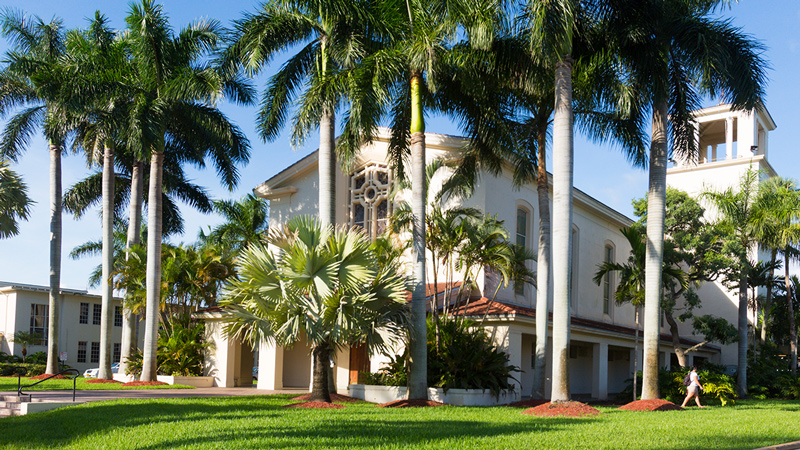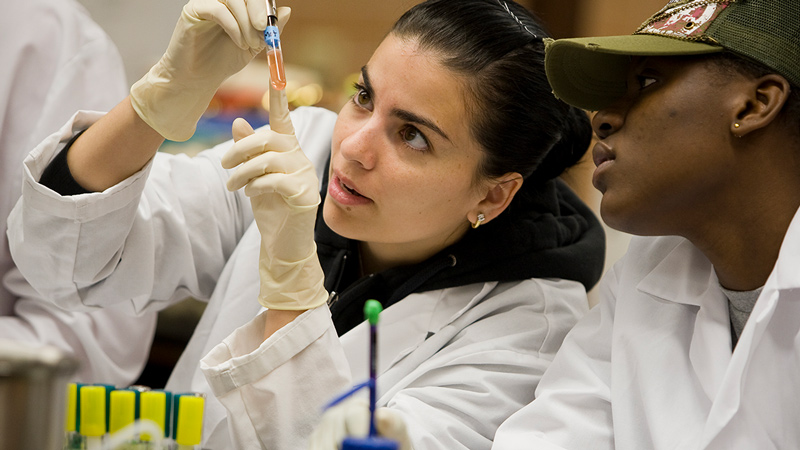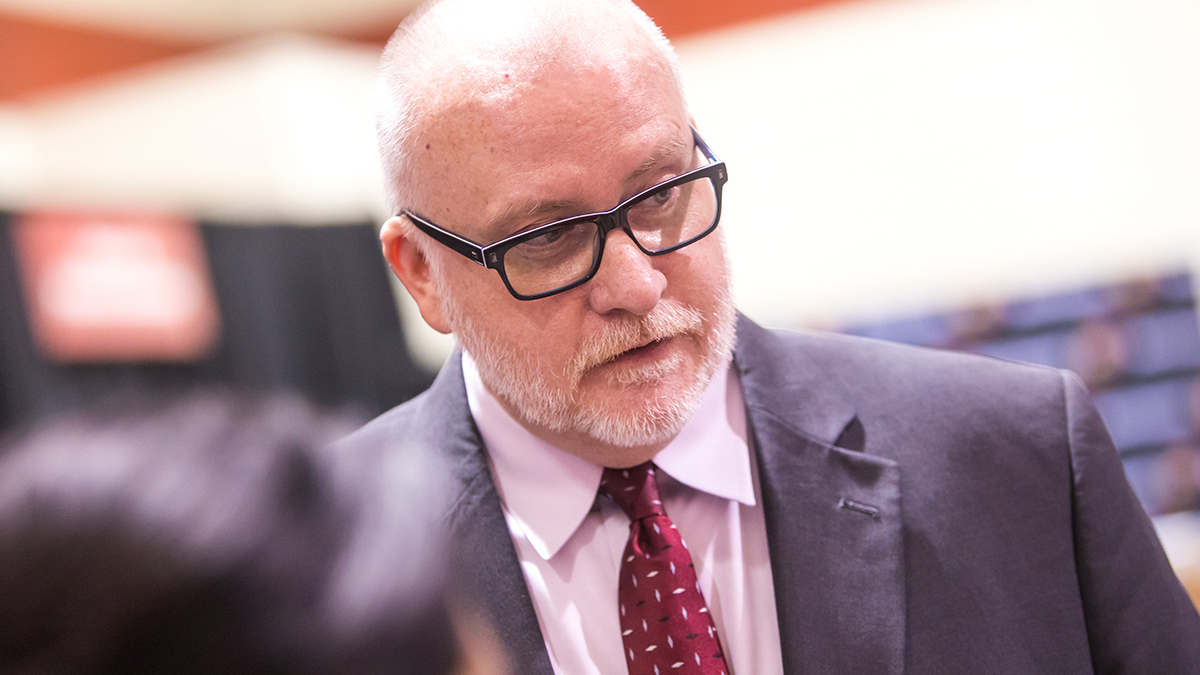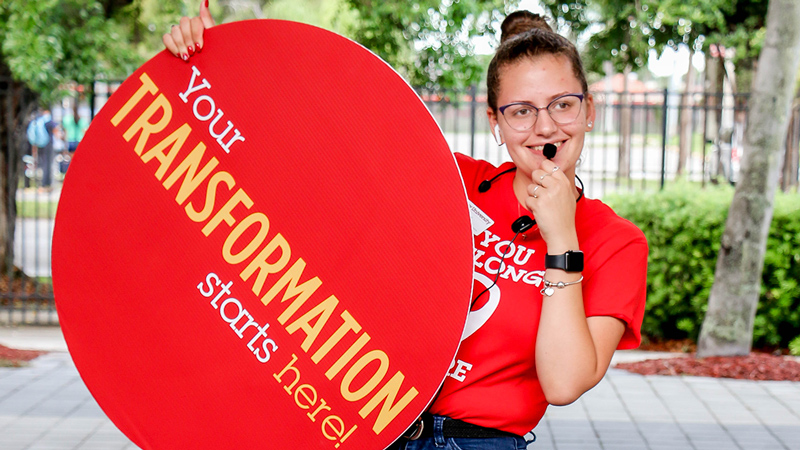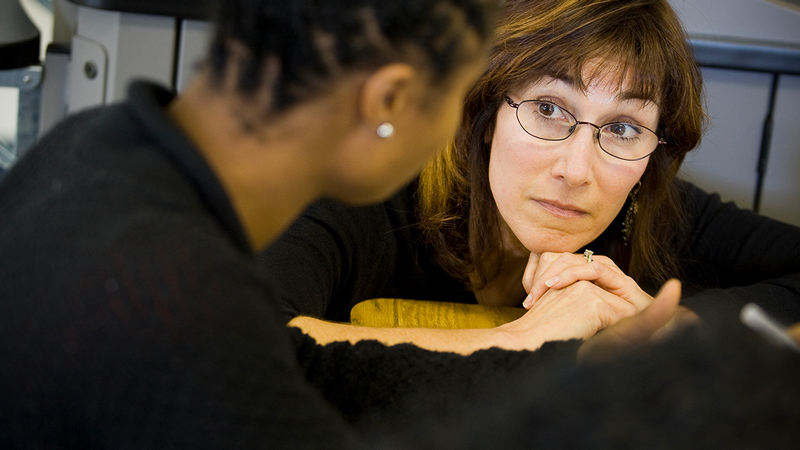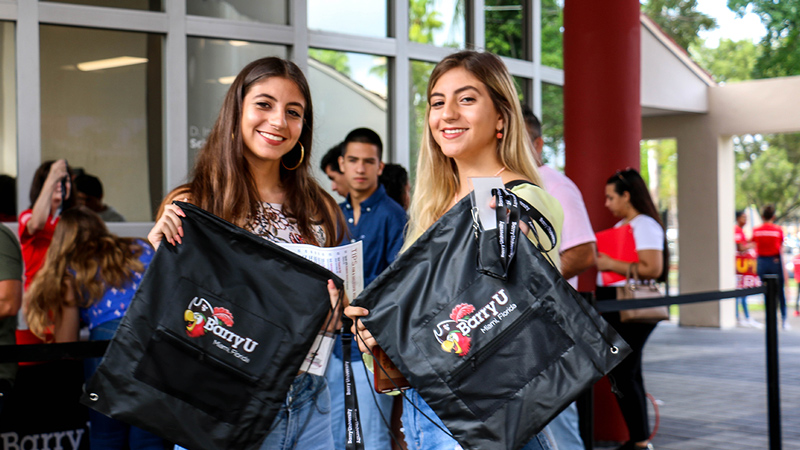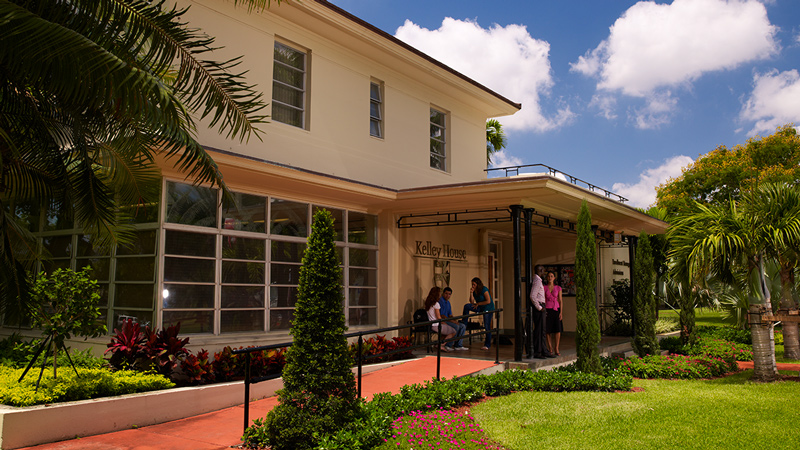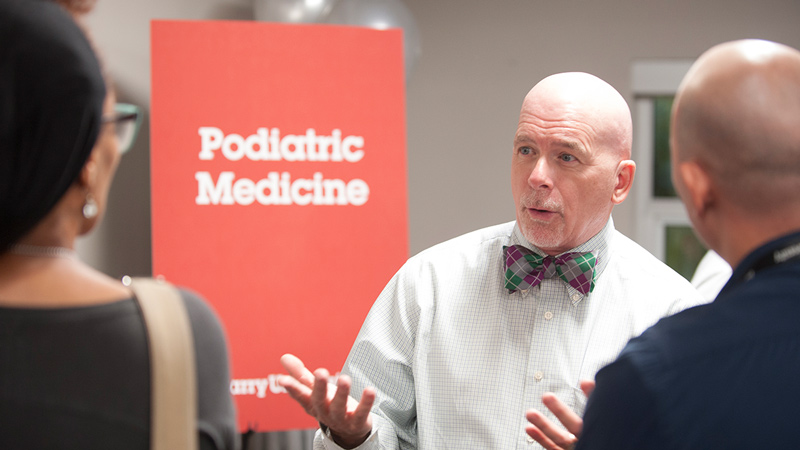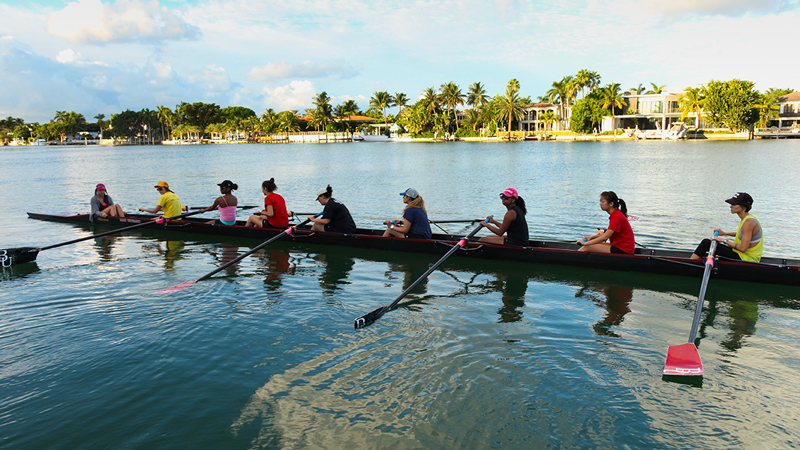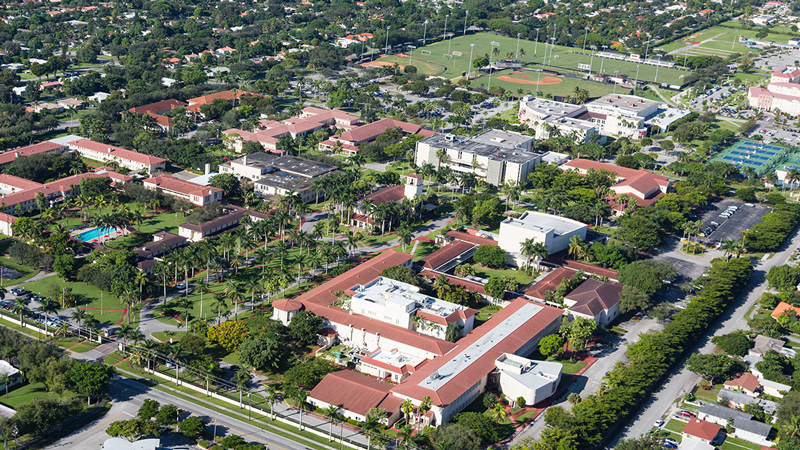Ableism: A set of beliefs or practices at the individual, community, or systemic level that devalue, disadvantage, disempower, or discriminate against people with physical, intellectual, or psychiatric disabilities and often rests on the assumption that disabled people need to be ‘fixed’ in one form or the other.
Center for the Study of Social Policy. (2019, September). Key equity terms & concepts: A glossary for shared understanding. https://cssp.org/wp-content/uploads/2019/09/Key-Equity-Terms-and-Concepts-vol1.pdfAvarna. (2021, January 25). Diversity, equity, & inclusion (DEI) vocab. https://theavarnagroup.com/wp-content/uploads/2016/01/Vocab-Sheet-v6.pdf
Acceptance: An active concept describing the decision of a person or a social collective to approve and acknowledge the value of a fact, action, thought, identity, state of being or circumstance, either in the past or the present. Acceptance carries with it the recognition of the intrinsic nature of their value as human beings and the full affirmation of their civil rights and as citizens. These include the right to live a life of dignity, free of discrimination, exclusion, rejection and violence, with access to all the material and interpersonal elements that aid, support and sustain their satisfactory participation in the community.
Acevedo, S. M. (n.d.). Anti-Ableist glossary of disability terms. The National Resource Center for Reaching Victims. Retrieved April 7, 2021 from https://reachingvictims.org/wp-content/uploads/2020/07/Anti-Ableist-Glossary-of-Disability-Terms.pdf
Accessibility: The extent to which a space is readily approachable and usable by people with disabilities. A space can be described as a physical or literal space, such as a facility, website, conference room, office, or bathroom, or a figurative space, such as a conversation or activity
Center for the Study of Social Policy. (2019, September). Key equity terms & concepts: A glossary for shared understanding. https://cssp.org/wp-content/uploads/2019/09/Key-Equity-Terms-and-Concepts-vol1.pdf
Adaptive technology: Hardware or software products that provide access to a computer that is otherwise inaccessible to an individual with a disability.
University of Washington Disabilities, Opportunities, Internetworking, and Technology, DO IT. (2012). Glossary of disability-related terms. https://www.washington.edu/doit/glossary-disability-related-terms
Affinity Bias: Unconscious preferences we have for people who are more like us.
Avarna. (2021, January 25). Diversity, equity, & inclusion (DEI) vocab. https://theavarnagroup.com/wp-content/uploads/2016/01/Vocab-Sheet-v6.pdf
Agender: A person who does not identify with any particular gender or who identifies without gender.
National Quality Improvement Center on Tailored Services, Placement Stability and Permanency for Lesbian, Gay, Bisexual, Transgender, Questioning and Two-Spirit Children and Youth in Foster Care. (n.d). QIC LBGTQ2S glossary. Retrieved April 7, 2021 from https://qiclgbtq2s.org/about-the-qic/qic-materials/
Ally: Allyship is a philosophy rooted in action; A person or organization that actively aligns and uses their resources to support individuals and communities with a specific issue. It demands doing what is necessary to recognize and subvert systems of oppression. Allyship is a process, is based on trust and accountability, looks different for everyone based on your identities, experiences, and spheres of influence. Recently, allyship has been critiqued as being too passive and some have replaced it with accompliceship.
Avarna. (2021, January 25). Diversity, equity, & inclusion (DEI) vocab. https://theavarnagroup.com/wp-content/uploads/2016/01/Vocab-Sheet-v6.pdfNational Quality Improvement Center on Tailored Services, Placement Stability and Permanency for Lesbian, Gay, Bisexual, Transgender, Questioning and Two-Spirit Children and Youth in Foster Care. (n.d). QIC LBGTQ2S glossary. Retrieved April 7, 2021 from https://qiclgbtq2s.org/about-the-qic/qic-materials/
Androgynous: A gender expression that has both masculine and feminine elements
National Quality Improvement Center on Tailored Services, Placement Stability and Permanency for Lesbian, Gay, Bisexual, Transgender, Questioning and Two-Spirit Children and Youth in Foster Care. (n.d). QIC LBGTQ2S glossary. Retrieved April 7, 2021 from https://qiclgbtq2s.org/about-the-qic/qic-materials/
Anti-Black Racism: Any attitude, behavior, practice, or policy that explicitly or implicitly reflects the belief that Black people are inferior to another racial group. Anti-Black racism is reflected in interpersonal, institutional, and systemic levels of racism and is a function of White supremacy
Center for the Study of Social Policy. (2019, September). Key equity terms & concepts: A glossary for shared understanding. https://cssp.org/wp-content/uploads/2019/09/Key-Equity-Terms-and-Concepts-vol1.pdf
Anti-Racism: The work of actively opposing racism by advocating for changes in political, economic, and social life. Anti-racism starts as an individualized approach, with people committing to the opposition of individual racist behaviors and impacts. It also involves challenging racism by changing systems, organizational structures, policies and practices, and attitudes, to redistribute power in an equitable manner.
Racial Equity Tools. (n.d.). Racial equity tools glossary. Retrieved April 7, 2021 from https://www.racialequitytools.org/resources/fundamentals/resource-LISTCenter for the Study of Social Policy. (2019, September). Key equity terms & concepts: A glossary for shared understanding. https://cssp.org/wp-content/uploads/2019/09/Key-Equity-Terms-and-Concepts-vol1.pdf
Asexual: A person who does not have sexual desire or attraction. This does not mean the person is not having sex, nor does it mean they do not want to have relationships.
National Quality Improvement Center on Tailored Services, Placement Stability and Permanency for Lesbian, Gay, Bisexual, Transgender, Questioning and Two-Spirit Children and Youth in Foster Care. (n.d). QIC LBGTQ2S glossary. Retrieved April 7, 2021 from https://qiclgbtq2s.org/about-the-qic/qic-materials/
Assimilationist: One who is expressing the racist idea that a racial group is culturally or behaviorally inferior and is supporting cultural or behavioral enrichment programs to develop that racial group.
Racial Equity Tools. (n.d.). Racial equity tools glossary. Retrieved April 7, 2021 from https://www.racialequitytools.org/resources/fundamentals/resource-LIST
Bigotry: Intolerant prejudice that glorifies one‘s own group and denigrates members of other groups.
Racial Equity Tools. (n.d.). Racial equity tools glossary. Retrieved April 7, 2021 from https://www.racialequitytools.org/resources/fundamentals/resource-LIST
Bisexual: A person who is attracted to people of their own gender as well as other genders.
National Quality Improvement Center on Tailored Services, Placement Stability and Permanency for Lesbian, Gay, Bisexual, Transgender, Questioning and Two-Spirit Children and Youth in Foster Care. (n.d). QIC LBGTQ2S glossary. Retrieved April 7, 2021 from https://qiclgbtq2s.org/about-the-qic/qic-materials/
Cis/Cisgender: Denoting or relating to a person whose sense of personal identity and gender corresponds with the gender they were assigned at birth by a doctor. To be cisgender (commonly shortened to ‘cis’) means that you have body parts that are categorised as female or male and you identify with that gender from birth. It is often used to highlight the privilege of the majority of people who identify with their biological gender, and how people are treated differently in society based on their gender identification.
Crehan, M. (2018, May 11). Feminist glossary. Rosie Educational Blog. https://rosie.org.au/blog/feminist-glossary/National Quality Improvement Center on Tailored Services, Placement Stability and Permanency for Lesbian, Gay, Bisexual, Transgender, Questioning and Two-Spirit Children and Youth in Foster Care. (n.d). QIC LBGTQ2S glossary. Retrieved April 7, 2021 from https://qiclgbtq2s.org/about-the-qic/qic-materials/
Cisgender Privilege: The implicit and explicit privileges that cisgender people exercise. These privileges include, but are not limited to, the ability to use public restrooms without fear of verbal abuse, physical intimidation or arrest. The privileges also encompass freedom from questions about one’s anatomy (often by strangers) and the freedom from frequent misgendering. Cisgender people also enjoy a presumed “validity” as a man/woman/human and this validity is not based on surgical procedures or how well one “passes” as a man/woman/human, etc.
National Quality Improvement Center on Tailored Services, Placement Stability and Permanency for Lesbian, Gay, Bisexual, Transgender, Questioning and Two-Spirit Children and Youth in Foster Care. (n.d). QIC LBGTQ2S glossary. Retrieved April 7, 2021 from https://qiclgbtq2s.org/about-the-qic/qic-materials/
Classism: The institutional, cultural, and individual set of practices and beliefs that assign differential value to people according to their socioeconomic status. Classism also refers to the systematic oppression of poor and working class people by those who control resources.
Center for the Study of Social Policy. (2019, September). Key equity terms & concepts: A glossary for shared understanding. https://cssp.org/wp-content/uploads/2019/09/Key-Equity-Terms-and-Concepts-vol1.pdf
Code-switching: The practice of altering behavior, appearance, and language to fit in. Codeswitching happens for many reasons, but in the DEI context, code-switching typically refers to the practice by people with marginalized identities of changing their behavior, appearance, and language to assimilate to the dominant culture and gain access to advantages experienced by people with dominant identities.
Avarna. (2021, January 25). Diversity, equity, & inclusion (DEI) vocab. https://theavarnagroup.com/wp-content/uploads/2016/01/Vocab-Sheet-v6.pdf
Colorblindness: The process by which a person attempts to ignore the existence of race or skin color in service of seeing past race and just seeing the person. This de-emphasizing of race, however, invalidates the importance of peoples‘ culture, ignores the manifestations of racist policies which preserves the ongoing processes that maintain racial and ethnic stratification in social institutions and ignores the real, lived experience of people of color .
Avarna. (2021, January). Diversity, Equity, & Inclusion (DEI) Vocab. https://theavarnagroup.com/wp-content/uploads/2016/01/Vocab-Sheet-v6.pdfCenter for the Study of Social Policy. (2019, September). Key equity terms & concepts: A glossary for shared understanding. https://cssp.org/wp-content/uploads/2019/09/Key-Equity-Terms-and-Concepts-vol1.pdf
Colorism: Using White skin color as the standard, colorism is the allocation of privilege and favor to lighter skin colors and disadvantage to darker skin colors. Colorism operates both within and across racial and ethnic groups and is rooted in White supremacy.
Center for the Study of Social Policy. (2019, September). Key equity terms & concepts: A glossary for shared understanding. https://cssp.org/wp-content/uploads/2019/09/Key-Equity-Terms-and-Concepts-vol1.pdf
Coming out: The process of acknowledging one’s sexual orientation or gender identity to oneself and/or individuals in one’s life. Often incorrectly thought of to be a one-time event, this is a lifelong and sometimes daily process.
National Quality Improvement Center on Tailored Services, Placement Stability and Permanency for Lesbian, Gay, Bisexual, Transgender, Questioning and Two-Spirit Children and Youth in Foster Care. (n.d). QIC LBGTQ2S glossary. Retrieved April 7, 2021 from https://qiclgbtq2s.org/about-the-qic/qic-materials/
Confirmation Bias: Our tendency to interpret information based on a way that confirms our own previous beliefs and experiences. In the equity context, confirmation bias puts pressure on underrepresented groups to constantly monitor their behavior and gear it to dominant group norms to avoid reinforcing negative stereotypes about their group.
Avarna. (2021, January 25). Diversity, equity, & inclusion (DEI) vocab. https://theavarnagroup.com/wp-content/uploads/2016/01/Vocab-Sheet-v6.pdf
Cross Dress: To cross-dress is to wear clothing most often associated (in one’s culture and historical timeframe) with people of another gender.
National Quality Improvement Center on Tailored Services, Placement Stability and Permanency for Lesbian, Gay, Bisexual, Transgender, Questioning and Two-Spirit Children and Youth in Foster Care. (n.d). QIC LBGTQ2S glossary. Retrieved April 7, 2021 from https://qiclgbtq2s.org/about-the-qic/qic-materials/
Cultural Appropriation: The unacknowledged or inappropriate adoption of the customs, practices, ideas, and other cultural components of one people or society by members of another and typically more dominant people or society. When a person or group of people take an element from a culture or race other than their own and use it outside of its original context, or, in a way that ignores its cultural significance. Elements that are often culturally appropriated include traditional dress and decoration, music, celebrations, dance, art and religion. A few examples of cultural appropriation are people of non-native American background wearing a traditional native American headdress and people of non-Indian background wearing bindis. The best way to work out if something is cultural appropriation is to look for the voices of those from that culture and be guided by them.
Crehan, M. (2018, May 11). Feminist glossary. Rosie Educational Blog. https://rosie.org.au/blog/feminist-glossary/
Cultural competence: The ability to interact effectively across various facets of diversity, to flex with differences. Cultural competence is grounded in the respect and appreciation of cultural differences. It requires (1) being self-aware of your own culture, assumptions, values, styles, biases, attitudes, privilege, etc.; (2) understanding others‘ cultures, assumptions, values, styles, biases, attitudes, privilege, etc.; and (3) based on this knowledge, understanding your potential impact on others and interacting with them in a situationally appropriate way.
Avarna. (2021, January 25). Diversity, equity, & inclusion (DEI) vocab. https://theavarnagroup.com/wp-content/uploads/2016/01/Vocab-Sheet-v6.pdfCenter for the Study of Social Policy. (2019, September). Key equity terms & concepts: A glossary for shared understanding. https://cssp.org/wp-content/uploads/2019/09/Key-Equity-Terms-and-Concepts-vol1.pdf
Culture: The languages, customs, beliefs, rules, arts, knowledge, and collective identities and memories developed by members of all social groups that make their social environments meaningful.
Center for the Study of Social Policy. (2019, September). Key equity terms & concepts: A glossary for shared understanding. https://cssp.org/wp-content/uploads/2019/09/Key-Equity-Terms-and-Concepts-vol1.pdf
Damage Imagery: Perpetuating stereotypes through the use of visuals, text/narratives, or data (e.g. statistics) to highlight inequities without the appropriate historical and sociopolitical context. This can be remedied by leading with an explanation of historical and systemic barriers, and by focusing on strengths and solutions within the communities that are the subject of the visuals, text/narratives, or data.
Center for the Study of Social Policy. (2019, September). Key equity terms & concepts: A glossary for shared understanding. https://cssp.org/wp-content/uploads/2019/09/Key-Equity-Terms-and-Concepts-vol1.pdf
Decolonization: The active resistance against colonial powers, and a shifting of power towards political, economic, educational, cultural, psychic independence and power that originate from a colonized nation‘s own indigenous culture. This process occurs politically and also applies to personal and societal psychic, cultural, political, agricultural, and educational deconstruction of colonial oppression.
Racial Equity Tools. (n.d.). Racial equity tools glossary. Retrieved April 7, 2021 from https://www.racialequitytools.org/resources/fundamentals/resource-LIST
Disability: A mental, emotional, or physical difference that changes the way a person participates in everyday activities. Increasingly, disability is being discussed as a social construct, meaning that the mental, emotional, and physical norms from which we then determine what is different or what is a disability are arbitrary.
Avarna. (2021, January 25). Diversity, equity, & inclusion (DEI) vocab. https://theavarnagroup.com/wp-content/uploads/2016/01/Vocab-Sheet-v6.pdf
Disability Justice: Disability Justice involves a comprehensive understanding of the processes of systematic oppression and the intrinsic links between capitalism, racism, classism, sexism, homophobia, transphobia, Islamophobia, fatphobia, and anti-immigrant sentiment and other forms of material and cultural discrimination and alienation. Disability Justice signifies an unprecedented advance in the struggle for self-management and autonomy in disabled communities.
National Center on Disability and Journalism. (n.d.). Disability language style guide. Retrieved April 7, 2021 from https://ncdj.org/style-guide/
Discrimination: The unequal treatment of members of various groups based on race, ethnicity, gender, gender expression, socioeconomic class, sexual orientation, physical or mental ability, religion, citizenship status, a combination of those identified, and/or other categories.
Center for the Study of Social Policy. (2019, September). Key equity terms & concepts: A glossary for shared understanding. https://cssp.org/wp-content/uploads/2019/09/Key-Equity-Terms-and-Concepts-vol1.pdf
Diversity: The differences among us based on how we experience systemic advantages or encounter systemic barriers in access to opportunities and resources. A diversity focus emphasizes “how many of these” we have in the room, organization, etc. Diversity programs and cultural celebrations/education programs are not equivalent to racial justice or inclusion. It is possible to name, acknowledge, and celebrate diversity without doing anything to transfor Diversity is the outcome of inclusion and equity efforts.m the institutional or structural systems that produce, and maintain, injustices in our communities. Race and ethnicity are not the only ways in which we are diverse as a group. There are countless visible and invisible facets of diversity.
Avarna. (2021, January 25). Diversity, equity, & inclusion (DEI) vocab. https://theavarnagroup.com/wp-content/uploads/2016/01/Vocab-Sheet-v6.pdfCenter for the Study of Social Policy. (2019, September). Key equity terms & concepts: A glossary for shared understanding. https://cssp.org/wp-content/uploads/2019/09/Key-Equity-Terms-and-Concepts-vol1.pdf
Dominant Group: Not necessarily the majority, but the group within a society with the power, privilege, and social status to control and define societal resources and social, political, and economic systems and norms.
Center for the Study of Social Policy. (2019, September). Key equity terms & concepts: A glossary for shared understanding. https://cssp.org/wp-content/uploads/2019/09/Key-Equity-Terms-and-Concepts-vol1.pdf
Drag queen/drag king: Someone who dresses and performs as the opposite gender for entertainment purposes. Often embodies a theatrical or exaggerated version of masculinity or femininity; does not necessarily self-identify as transgender.
National Quality Improvement Center on Tailored Services, Placement Stability and Permanency for Lesbian, Gay, Bisexual, Transgender, Questioning and Two-Spirit Children and Youth in Foster Care. (n.d). QIC LBGTQ2S glossary. Retrieved April 7, 2021 from https://qiclgbtq2s.org/about-the-qic/qic-materials/
Equality: Consistent treatment across differences. The effort to treat everyone the same to ensure that everyone has access to the same opportunities. However, only working to achieve equality ignores historical and structural factors that benefit some social groups and disadvantage other social groups in ways that create differential starting points.
Center for the Study of Social Policy. (2019, September). Key equity terms & concepts: A glossary for shared understanding. https://cssp.org/wp-content/uploads/2019/09/Key-Equity-Terms-and-Concepts-vol1.pdf
Equity: An approach based in fairness to ensure everyone has access to the same opportunities and resources. In practice, it ensures everyone is given equal opportunity to thrive. Resources may be divided and shared unequally to make sure that each person can access an opportunity. Equity is therefore not the same thing as equality. Equity takes into account that people have different access to resources because of system of oppression and privilege. Working to achieve equity acknowledges unequal starting places and the need to correct the imbalance.
Avarna. (2021, January 25). Diversity, equity, & inclusion (DEI) vocab. https://theavarnagroup.com/wp-content/uploads/2016/01/Vocab-Sheet-v6.pdfCenter for the Study of Social Policy. (2019, September). Key equity terms & concepts: A glossary for shared understanding. https://cssp.org/wp-content/uploads/2019/09/Key-Equity-Terms-and-Concepts-vol1.pdf
Ethnicity: Denotes groups that share a common identity-based ancestry, language, or culture. It is often based on religion, beliefs, and customs as well as memories of migration or colonization.
Center for the Study of Social Policy. (2019, September). Key equity terms & concepts: A glossary for shared understanding. https://cssp.org/wp-content/uploads/2019/09/Key-Equity-Terms-and-Concepts-vol1.pdf
Gaslight: To manipulate someone by psychological means into doubting their own sanity. Gaslighting is a form of psychological abuse where the perpetrator makes the victim believe that they are imagining things, when in fact the perpetrator is manipulating the situation to gain control. This occurs frequently among marginalized groups who are told that they are just “imagining” the oppression that they face.
Crehan, M. (2018, May 11). Feminist glossary. Rosie Educational Blog. https://rosie.org.au/blog/feminist-glossary/
Gay: A term used to describe a man who is attracted to another man; this term may also be used by women attracted to another woman.
National Quality Improvement Center on Tailored Services, Placement Stability and Permanency for Lesbian, Gay, Bisexual, Transgender, Questioning and Two-Spirit Children and Youth in Foster Care. (n.d). QIC LBGTQ2S glossary. Retrieved April 7, 2021 from https://qiclgbtq2s.org/about-the-qic/qic-materials/
Gender: Social and cultural expression of sex. Gender is not assigned biological sex.
National Quality Improvement Center on Tailored Services, Placement Stability and Permanency for Lesbian, Gay, Bisexual, Transgender, Questioning and Two-Spirit Children and Youth in Foster Care. (n.d). QIC LBGTQ2S glossary. Retrieved April 7, 2021 from https://qiclgbtq2s.org/about-the-qic/qic-materials/
Gender Binary: The false assumption that there are only two genders, male and female.
Avarna. (2021, January 25). Diversity, equity, & inclusion (DEI) vocab. https://theavarnagroup.com/wp-content/uploads/2016/01/Vocab-Sheet-v6.pdf
Gender expression: The ways in which an individual communicates their gender to others through behavior, clothing, hairstyle, voice, etc.; not an indication of sexual orientation.
National Quality Improvement Center on Tailored Services, Placement Stability and Permanency for Lesbian, Gay, Bisexual, Transgender, Questioning and Two-Spirit Children and Youth in Foster Care. (n.d). QIC LBGTQ2S glossary. Retrieved April 7, 2021 from https://qiclgbtq2s.org/about-the-qic/qic-materials/
Gender fluid: An individual whose gender identity may continually change throughout their lifetime. These individuals may not feel confined within the socially and culturally expected gender roles and in fact may identify differently from situation to situation.
National Quality Improvement Center on Tailored Services, Placement Stability and Permanency for Lesbian, Gay, Bisexual, Transgender, Questioning and Two-Spirit Children and Youth in Foster Care. (n.d). QIC LBGTQ2S glossary. Retrieved April 7, 2021 from https://qiclgbtq2s.org/about-the-qic/qic-materials/
Gender identity: One’s internal, personal sense of their gender. Gender identity is best represented as a spectrum and an individual may move around this spectrum. One’s gender identity can be the same or different from their sex assigned at birth. Some terms that are associated with this spectrum are man, woman, gender fluid, genderqueer, trans, transgender and two-spirit, although these are not the only terms. Some individuals may identify as both man and woman, neither man nor woman, or non-binary.
National Quality Improvement Center on Tailored Services, Placement Stability and Permanency for Lesbian, Gay, Bisexual, Transgender, Questioning and Two-Spirit Children and Youth in Foster Care. (n.d). QIC LBGTQ2S glossary. Retrieved April 7, 2021 from https://qiclgbtq2s.org/about-the-qic/qic-materials/Center for the Study of Social Policy. (2019, September). Key equity terms & concepts: A glossary for shared understanding. https://cssp.org/wp-content/uploads/2019/09/Key-Equity-Terms-and-Concepts-vol1.pdf
Gender nonconformity: Expressing gender and/or having gender characteristics that do not conform to the expectations of society and culture. Also referred to as gender variant, gender diverse, or gender creative.
National Quality Improvement Center on Tailored Services, Placement Stability and Permanency for Lesbian, Gay, Bisexual, Transgender, Questioning and Two-Spirit Children and Youth in Foster Care. (n.d). QIC LBGTQ2S glossary. Retrieved April 7, 2021 from https://qiclgbtq2s.org/about-the-qic/qic-materials/
Gender Pronoun: The term one uses to identify themselves in place of their name (i.e. ze/ hir/hirs, ey/em/eirs, they/them/theirs, she/her/hers, he/him/his, etc.). The use of the specific gender pronoun identified by each individual should be respected, should not be regarded as optional, and should be used when referring to the individual even when not present.
Center for the Study of Social Policy. (2019, September). Key equity terms & concepts: A glossary for shared understanding. https://cssp.org/wp-content/uploads/2019/09/Key-Equity-Terms-and-Concepts-vol1.pdf
Gender role: Culturally or socially determined sets of attitudes and behaviors that are expected of an individual based on their assigned sex at birth or perceived sex.
National Quality Improvement Center on Tailored Services, Placement Stability and Permanency for Lesbian, Gay, Bisexual, Transgender, Questioning and Two-Spirit Children and Youth in Foster Care. (n.d). QIC LBGTQ2S glossary. Retrieved April 7, 2021 from https://qiclgbtq2s.org/about-the-qic/qic-materials/
Genderqueer (also gender queer): An umbrella term some people use to describe themselves when their experience of their gender identity falls out of the binary of male or female.
National Quality Improvement Center on Tailored Services, Placement Stability and Permanency for Lesbian, Gay, Bisexual, Transgender, Questioning and Two-Spirit Children and Youth in Foster Care. (n.d). QIC LBGTQ2S glossary. Retrieved April 7, 2021 from https://qiclgbtq2s.org/about-the-qic/qic-materials/
Heteronormative: Denoting or relating to a world view that promotes heterosexuality as the normal or preferred sexual orientation.
Crehan, M. (2018, May 11). Feminist glossary. Rosie Educational Blog. https://rosie.org.au/blog/feminist-glossary/
Heterosexual: Feeling romantic, emotional, and sexual attraction to a person(s) of the opposite gender with which one identifies; sometimes referred to as being straight.
National Quality Improvement Center on Tailored Services, Placement Stability and Permanency for Lesbian, Gay, Bisexual, Transgender, Questioning and Two-Spirit Children and Youth in Foster Care. (n.d). QIC LBGTQ2S glossary. Retrieved April 7, 2021 from https://qiclgbtq2s.org/about-the-qic/qic-materials/
Heterosexual Privilege: The privileges that heterosexual people have because of heterosexism. Being heterosexual carries with it privileges that may be explicit or implicit such as the right to marry, adopt children, be a foster parent, fair employment etc.
National Quality Improvement Center on Tailored Services, Placement Stability and Permanency for Lesbian, Gay, Bisexual, Transgender, Questioning and Two-Spirit Children and Youth in Foster Care. (n.d). QIC LBGTQ2S glossary. Retrieved April 7, 2021 from https://qiclgbtq2s.org/about-the-qic/qic-materials/
Homophobia: The fear and hatred of or discomfort with people who are attracted to members of the same gender. Homophobia occurs in a broader heterosexist social context that systematically disadvantages LGBTQ+ people and promotes and rewards anti-LGBTQ+ sentiment.
Center for the Study of Social Policy. (2019, September). Key equity terms & concepts: A glossary for shared understanding. https://cssp.org/wp-content/uploads/2019/09/Key-Equity-Terms-and-Concepts-vol1.pdf
Homosexual: Feeling romantic, emotional, and/or sexual attraction to a person(s) of the same gender with which one identifies. Although some individuals may identify with this term, it is now a dated term that has negative connotations and can be considered derogatory.
National Quality Improvement Center on Tailored Services, Placement Stability and Permanency for Lesbian, Gay, Bisexual, Transgender, Questioning and Two-Spirit Children and Youth in Foster Care. (n.d). QIC LBGTQ2S glossary. Retrieved April 7, 2021 from https://qiclgbtq2s.org/about-the-qic/qic-materials/
Identity: What, how, and who one perceives oneself to be; a multi-faceted component of self-concept that can evolve throughout one‘s life span.
National Quality Improvement Center on Tailored Services, Placement Stability and Permanency for Lesbian, Gay, Bisexual, Transgender, Questioning and Two-Spirit Children and Youth in Foster Care. (n.d). QIC LBGTQ2S glossary. Retrieved April 7, 2021 from https://qiclgbtq2s.org/about-the-qic/qic-materials/
Identity First Language: Identify-first language contrasts with people-first language. With identity-first language, the disability is mentioned first. For example, “Down syndrome girl” or “autistic boy.” An example of people-first language is “a girl with Down syndrome” or “a boy with autism.” Generally speaking, people-first language is preferred, but in some cases – most notably in the Deaf community and among autistic people – identity-first language is preferred.
National Center on Disability and Journalism. (n.d.). Disability language style guide. Retrieved April 7, 2021 from https://ncdj.org/style-guide/
Implicit Bias: A belief or attitude that affects our understanding, decision, and actions, and that exists without our conscious awareness.
Center for the Study of Social Policy. (2019, September). Key equity terms & concepts: A glossary for shared understanding. https://cssp.org/wp-content/uploads/2019/09/Key-Equity-Terms-and-Concepts-vol1.pdf
Inclusion: Celebrating, centering, and amplifying the perspectives, voices, values, and needs of people who experience systemic barriers, mistreatment, or disadvantages based on their identities in order to ensure they feel a sense of belonging. Inclusion is not merely tolerating or accommodating differences, it‘s about actively valuing and honoring it. Inclusion is also not about surmounting, overcoming, or transcending differences to focus on “our common humanity.” Diversity is what we are, and inclusion is what we do.
Avarna. (2021, January 25). Diversity, equity, & inclusion (DEI) vocab. https://theavarnagroup.com/wp-content/uploads/2016/01/Vocab-Sheet-v6.pdf
Indigenous: Indigenous populations are composed of the existing descendants of the peoples who inhabited the present territory of a country wholly or partially at the time when persons of a different culture or ethnic origin arrived there from other parts of the world, overcame them and, by conquest, settlement, or other means, reduced them to a non-dominant or colonial condition. Today, Indgenous people live more in conformity with their particular social, economic, and cultural customs and traditions than with the institutions of the country of which they now form part, under a State structure which incorporates mainly national, social, and cultural characteristics of other segments of the population which are predominant.
Racial Equity Tools. (n.d.). Racial equity tools glossary. Retrieved April 7, 2021 from https://www.racialequitytools.org/resources/fundamentals/resource-LIST
Institutional Racism: The practices that perpetuate racial disparities, uphold White supremacy, and serve to the detriment and harm of persons of color and keep them in cycles of harm. Institutional racism also refers to policies that generate different outcomes for persons of different race. These laws, policies, and practices are not necessarily explicit in mentioning any racial group, but work to create advantages for White persons and disadvantages for people of color.
Center for the Study of Social Policy. (2019, September). Key equity terms & concepts: A glossary for shared understanding. https://cssp.org/wp-content/uploads/2019/09/Key-Equity-Terms-and-Concepts-vol1.pdf
Internalized Racism: When a racial group oppressed by racism supports the supremacy and dominance of the dominating group by maintaining or participating in the set of attitudes, behaviors, social structures, and ideologies that undergird the dominating group‘s power.
Racial Equity Tools. (n.d.). Racial equity tools glossary. Retrieved April 7, 2021 from https://www.racialequitytools.org/resources/fundamentals/resource-LIST
Interpersonal Racism: The racism that occurs between individuals. It is when someone consciously or unconsciously employs or acts upon on racist thoughts, in ways that perpetuate stereotypes and harms people of color.
Center for the Study of Social Policy. (2019, September). Key equity terms & concepts: A glossary for shared understanding. https://cssp.org/wp-content/uploads/2019/09/Key-Equity-Terms-and-Concepts-vol1.pdf
Intersectionality: The interconnected nature of identities such as race, class, and gender as they apply to a given individual or group. Intersectionality addresses the way in which individuals simultaneously experience oppression and privilege in their daily lives interpersonally and systemically based on the various aspects of their identity. Intersectionality promotes the idea that aspects of our identity do not work in a silo. For example, when racial justice doesn’t have a critique of patriarchy and homophobia, the particular way that racism is experienced and exacerbated by heterosexism, classism etc., falls outside of our political organizing. It means that significant numbers of people in our communities aren’t being served by social justice frames because they don’t address the particular ways that they’re experiencing discrimination.
Crehan, M. (2018, May 11). Feminist glossary. Rosie Educational Blog. https://rosie.org.au/blog/feminist-glossary/Center for the Study of Social Policy. (2019, September). Key equity terms & concepts: A glossary for shared understanding. https://cssp.org/wp-content/uploads/2019/09/Key-Equity-Terms-and-Concepts-vol1.pdfRacial Equity Tools. (n.d.). Racial equity tools glossary. Retrieved April 7, 2021 from https://www.racialequitytools.org/resources/fundamentals/resource-LIST
Intersex: A general term constructed to describe variations of sex characteristics. This could include mixed chromosomes, elements of both male and female reproductive systems, or genitalia that do not appear clearly male or clearly female at birth. For example, a baby born with a vagina and testes. This is the preffered term to the outdated and offensive term hermaphrodite.
National Quality Improvement Center on Tailored Services, Placement Stability and Permanency for Lesbian, Gay, Bisexual, Transgender, Questioning and Two-Spirit Children and Youth in Foster Care. (n.d). QIC LBGTQ2S glossary. Retrieved April 7, 2021 from https://qiclgbtq2s.org/about-the-qic/qic-materials/
Justice: The process required to move us from an unfair, unequal, or inequitable state to one which is fair, equal, or equitable, depending on the specific content. Justice is a transformative practice that relies on the entire community to respond to past and current harm when it occurs in society. Through justice, we seek a proactive enforcement of policies, practices and attitudes that produce equitable access, opportunities, treatment and outcomes for all regardless of the various identities that one holds. Whereas equity is about reapportioning or redistributing resources so people can access opportunities, justice is about dismantling barriers to those opportunities.
Center for the Study of Social Policy. (2019, September). Key equity terms & concepts: A glossary for shared understanding. https://cssp.org/wp-content/uploads/2019/09/Key-Equity-Terms-and-Concepts-vol1.pdfAvarna. (2021, January 25). Diversity, equity, & inclusion (DEI) vocab. https://theavarnagroup.com/wp-content/uploads/2016/01/Vocab-Sheet-v6.pdf
Learning Disability: Disorder in one or more of the basic psychological processes involved in understanding or in using language, spoken or written, which may manifest itself in difficulties listening, thinking, speaking, reading, writing, spelling, or doing mathematical calculations. Frequent limitations include hyperactivity, distractibility, emotional instability, visual and/or auditory perception difficulties and/or motor limitations, depending on the type(s) of learning disability.
University of Washington Disabilities, Opportunities, Internetworking, and Technology, DO IT. (2012). Glossary of disability-related terms. https://www.washington.edu/doit/glossary-disability-related-terms
Lesbian: A term used to describe a woman who is attracted to other women.
National Quality Improvement Center on Tailored Services, Placement Stability and Permanency for Lesbian, Gay, Bisexual, Transgender, Questioning and Two-Spirit Children and Youth in Foster Care. (n.d). QIC LBGTQ2S glossary. Retrieved April 7, 2021 from https://qiclgbtq2s.org/about-the-qic/qic-materials/
LGBTQ+: An acronym for lesbian, gay, bisexual, transgender, and queer. The plus (+) is meant to be inclusive of all other expressions of gender identity and sexual orientation.
Center for the Study of Social Policy. (2019, September). Key equity terms & concepts: A glossary for shared understanding. https://cssp.org/wp-content/uploads/2019/09/Key-Equity-Terms-and-Concepts-vol1.pdf
Marginalized Communities: Groups of people who face systemic disadvantages, exclusion, and barriers to opportunities, resources and power based on their identities, including but not limited to black, indigenous, and people of color, immigrants, refugees, undocumented Americans, people with disabilities, women, anybody who identifies outside or beyond the gender binary or not as cisgender, anybody who is not heterosexual, poor and/or low income communities. This term is preferred to minority, though people of color or referencing the specific community is best. Marginalization occurs when members of a dominant group relegate a particular group to the edge of society by not allowing them an active voice, identity, or place for the purpose of maintaining power.
Avarna. (2021, January 25). Diversity, equity, & inclusion (DEI) vocab. https://theavarnagroup.com/wp-content/uploads/2016/01/Vocab-Sheet-v6.pdfCenter for the Study of Social Policy. (2019, September). Key equity terms & concepts: A glossary for shared understanding. https://cssp.org/wp-content/uploads/2019/09/Key-Equity-Terms-and-Concepts-vol1.pdf
Microaggressions: Commonplace verbal, behavioral, or environmental indignities, whether intentional or unintentional, that communicate or imply hostile or derogatory slights and insults toward a marginalized population. They can feel small or subtle to the person engaging in the microaggression, but the impact can be large for the recipient. If experienced chronically, a person can feel, “death by a thousand tiny cuts.”
Avarna. (2021, January 25). Diversity, equity, & inclusion (DEI) vocab. https://theavarnagroup.com/wp-content/uploads/2016/01/Vocab-Sheet-v6.pdfCenter for the Study of Social Policy. (2019, September). Key equity terms & concepts: A glossary for shared understanding. https://cssp.org/wp-content/uploads/2019/09/Key-Equity-Terms-and-Concepts-vol1.pdf
Minority Stress: The minority stress model argues that disparities in health outcomes between minority groups and the general population can be attributed to a stressful environment created by pervasive stigma, prejudice, and discrimination. This regular exposure to stressors can lead to worsened physical and mental health outcomes. Multiple minority stress refers to the compounded stress experienced by people who are part of multiple minority groups (e.g., people who are LGBTQ2S and people of color).
National Quality Improvement Center on Tailored Services, Placement Stability and Permanency for Lesbian, Gay, Bisexual, Transgender, Questioning and Two-Spirit Children and Youth in Foster Care. (n.d). QIC LBGTQ2S glossary. Retrieved April 7, 2021 from https://qiclgbtq2s.org/about-the-qic/qic-materials/
Misgender: To refer to another person as a gender with which they do not identify. This could be done intentionally to cause emotional and psychological harm or unintentionally because of an assumption.
National Quality Improvement Center on Tailored Services, Placement Stability and Permanency for Lesbian, Gay, Bisexual, Transgender, Questioning and Two-Spirit Children and Youth in Foster Care. (n.d). QIC LBGTQ2S glossary. Retrieved April 7, 2021 from https://qiclgbtq2s.org/about-the-qic/qic-materials/
Misogyny: Dislike of, contempt for, or ingrained prejudice against women. Misogyny controls and punishes women who challenge male dominance and don‘t conform to the expectations of the misogynist. It is different from sexism which involves gender stereotypes, systemic gender discrimination and the belief that men and women are not equal. Misogynists reinforce gender stereotypes and believe that women should not be equal to men or respected. For example if a man claims that women are naturally maternal — that is sexist. If he says that women should only be housewives and serve their husbands and children — that misogynistic.
Crehan, M. (2018, May 11). Feminist glossary. Rosie Educational Blog. https://rosie.org.au/blog/feminist-glossary/
Model Minority: A term created by sociologist William Peterson to describe the Japanese community, whom he saw as being able to overcome oppression because of their cultural values. While individuals employing the Model Minority trope may think they are being complimentary, in fact the term is related to colorism and its root, anti-Blackness. The model minority myth creates an understanding of ethnic groups, including Asian Americans, as a monolith, or as a mass whose parts cannot be distinguished from each other. The model minority myth can be understood as a tool that white supremacy uses to pit people of color against each other in order to protect its status.
Racial Equity Tools. (n.d.). Racial equity tools glossary. Retrieved April 7, 2021 from https://www.racialequitytools.org/resources/fundamentals/resource-LIST
Non-binary: An umbrella term for gender identities that are not exclusively either boy/girl, or man/woman. People who identify their gender as non-binary may feel they have more than one gender, don‘t identify with a specific gender, or something else altogether.
National Quality Improvement Center on Tailored Services, Placement Stability and Permanency for Lesbian, Gay, Bisexual, Transgender, Questioning and Two-Spirit Children and Youth in Foster Care. (n.d). QIC LBGTQ2S glossary. Retrieved April 7, 2021 from https://qiclgbtq2s.org/about-the-qic/qic-materials/
Oppression: A system of supremacy and discrimination for the benefit of a limited dominant group that perpetuates itself through differential treatment, ideological domination, and institutional control. Oppression reflects the inequitable distribution of current and historical structural and institutional power, where a socially constructed binary of a “dominant group” horde power, wealth, and resources at the detriment of the many. This creates a lack of access, opportunity, safety, security, and resources for non-dominant populations.
Center for the Study of Social Policy. (2019, September). Key equity terms & concepts: A glossary for shared understanding. https://cssp.org/wp-content/uploads/2019/09/Key-Equity-Terms-and-Concepts-vol1.pdf
Othering: The perception or placing of a person or a group outside and/or in opposition to what is considered to be the norm. Othering is based on a conscious or unconscious assumption that a certain identified group poses a threat to the favored or dominant group and is used to create division.
Center for the Study of Social Policy. (2019, September). Key equity terms & concepts: A glossary for shared understanding. https://cssp.org/wp-content/uploads/2019/09/Key-Equity-Terms-and-Concepts-vol1.pdf
Outed: When someone else accidentally or deliberately reveals another's sexual orientation and/or gender identity, usually without permission.
National Quality Improvement Center on Tailored Services, Placement Stability and Permanency for Lesbian, Gay, Bisexual, Transgender, Questioning and Two-Spirit Children and Youth in Foster Care. (n.d). QIC LBGTQ2S glossary. Retrieved April 7, 2021 from https://qiclgbtq2s.org/about-the-qic/qic-materials/
Pansexual: A person who is attracted to people regardless of sex, gender identity, or gender expression.
National Quality Improvement Center on Tailored Services, Placement Stability and Permanency for Lesbian, Gay, Bisexual, Transgender, Questioning and Two-Spirit Children and Youth in Foster Care. (n.d). QIC LBGTQ2S glossary. Retrieved April 7, 2021 from https://qiclgbtq2s.org/about-the-qic/qic-materials/
Patriarchy: The manifestation and institutionalization of men and/or masculinity as dominant over women and/or femininity in both the private and public spheres. It perpetuates oppressive and limiting gender roles, sexism, transphobia, homophobia, discrimination and violence. Patriarchy does not mean ‘all men’, but rather the cultural system that values masculinity over femininity and upholds inequality between the genders in social, political and leadership settings.
Crehan, M. (2018, May 11). Feminist glossary. Rosie Educational Blog. https://rosie.org.au/blog/feminist-glossary/Center for the Study of Social Policy. (2019, September). Key equity terms & concepts: A glossary for shared understanding. https://cssp.org/wp-content/uploads/2019/09/Key-Equity-Terms-and-Concepts-vol1.pdf
People First Language: People-first language avoids defining a person in term of his or her disability. In most cases, this entails placing the reference to the disability after a reference to a person, as in “a person with a disability,” or “a person living with a disability,” rather than “the disabled person”. Not all people with disabilities prefer this term, some prefer Identity-first language.
National Center on Disability and Journalism. (n.d.). Disability language style guide. Retrieved April 7, 2021 from https://ncdj.org/style-guide/
People of Color: Political or social identity among and across groups of people that are racialized as non-White. The term “People of color” is used to acknowledge that many races experience racism in the U.S, and the term includes, but is not synonymous with, Black people. People of color or BIPOC (Black, Indigenous, People of Color) are generally considered the preferred and most inclusive term, currently.
Center for the Study of Social Policy. (2019, September). Key equity terms & concepts: A glossary for shared understanding. https://cssp.org/wp-content/uploads/2019/09/Key-Equity-Terms-and-Concepts-vol1.pdf
Power: The ability to define, set, or change situations. Power can manifest as personal or collective self-determination. Power is the ability to influence others to believe, behave, or adopt values as those in power desire.
Center for the Study of Social Policy. (2019, September). Key equity terms & concepts: A glossary for shared understanding. https://cssp.org/wp-content/uploads/2019/09/Key-Equity-Terms-and-Concepts-vol1.pdf
Prejudice: A preconceived opinion or assumption about something or someone rooted in stereotypes, rather than reason or fact, leading to unfavorable bias or hostility toward another person or group of people.
Center for the Study of Social Policy. (2019, September). Key equity terms & concepts: A glossary for shared understanding. https://cssp.org/wp-content/uploads/2019/09/Key-Equity-Terms-and-Concepts-vol1.pdf
Privilege: The flip side of oppression, privilege constitutes advantages we receive, consciously or not consciously, by virtue of one or more of our dominant identities. These advantages are upheld by systems of power that advantage certain groups over others, and include ideologies such as racism, sexism, cissexism, heterosexism, elitism, classism, ableism, nativism, colonialism, ageism, and sizeism. (collectively “the isms”).
Avarna. (2021, January 25). Diversity, equity, & inclusion (DEI) vocab. https://theavarnagroup.com/wp-content/uploads/2016/01/Vocab-Sheet-v6.pdf
Queer: Historically, this was a derogatory slang term used to identify people with diverse SOGIE. It is now a term that some people with diverse SOGIE are reclaiming and embracing as a symbol of pride that represents all individuals who fall outside of the gender and sexual orientation “norms.” It should be noted that it is not acceptable for someone who does not have diverse SOGIE to call someone queer unless the person indicates that is their preferred identity language.
National Quality Improvement Center on Tailored Services, Placement Stability and Permanency for Lesbian, Gay, Bisexual, Transgender, Questioning and Two-Spirit Children and Youth in Foster Care. (n.d). QIC LBGTQ2S glossary. Retrieved April 7, 2021 from https://qiclgbtq2s.org/about-the-qic/qic-materials/
Questioning: Being unsure of one's sexual orientation or gender identity.
National Quality Improvement Center on Tailored Services, Placement Stability and Permanency for Lesbian, Gay, Bisexual, Transgender, Questioning and Two-Spirit Children and Youth in Foster Care. (n.d). QIC LBGTQ2S glossary. Retrieved April 7, 2021 from https://qiclgbtq2s.org/about-the-qic/qic-materials/
Race: A social and political construction—with no inherent genetic or biological basis—used by social institutions to arbitrarily categorize and divide groups of individuals based on physical appearance (particularly skin color), ancestry, cultural history, and ethnic classification. The concept has been, and still is, used to justify the domination, exploitation, and violence against people who are racialized as non-White. Though race is a false construct, it has real consequences for all people.
Center for the Study of Social Policy. (2019, September). Key equity terms & concepts: A glossary for shared understanding. https://cssp.org/wp-content/uploads/2019/09/Key-Equity-Terms-and-Concepts-vol1.pdfAvarna. (2021, January 25). Diversity, equity, & inclusion (DEI) vocab. https://theavarnagroup.com/wp-content/uploads/2016/01/Vocab-Sheet-v6.pdf
Racial Anxiety: The fear of being judged, based on an individual’s race, when interacting with people of other races. White people fear assumptions of being racist, while people of color fear being the victim of discriminatory behavior and violence.
Center for the Study of Social Policy. (2019, September). Key equity terms & concepts: A glossary for shared understanding. https://cssp.org/wp-content/uploads/2019/09/Key-Equity-Terms-and-Concepts-vol1.pdf
Racial Disparity: An unequal outcome one racial group experiences as compared to the outcome for another racial group.
Center for the Study of Social Policy. (2019, September). Key equity terms & concepts: A glossary for shared understanding. https://cssp.org/wp-content/uploads/2019/09/Key-Equity-Terms-and-Concepts-vol1.pdf
Racial Disproportionality: The underrepresentation or overrepresentation of a racial or ethnic group at a particular decision point, event, or circumstance, in comparison to the group‘s percentage in the total population.
Center for the Study of Social Policy. (2019, September). Key equity terms & concepts: A glossary for shared understanding. https://cssp.org/wp-content/uploads/2019/09/Key-Equity-Terms-and-Concepts-vol1.pdf
Racial Equity: Racial equity is the condition that would be achieved if one's racial identity no longer predicted, in a statistical sense, how one fares. When we use the term, we are thinking about racial equity as one part of racial justice, and thus we also include work to address root causes of inequities, not just their manifestation. This includes elimination of policies, practices, attitudes, and cultural messages that reinforce differential outcomes by race or that fail to eliminate them.
Racial Equity Tools. (n.d.). Racial equity tools glossary. Retrieved April 7, 2021 from https://www.racialequitytools.org/resources/fundamentals/resource-LIST
Racial Justice: The systematic fair treatment of people of all races, resulting in equitable opportunities and outcomes for all. Racial justice—or racial equity—goes beyond “anti-racism.” It is not just the absence of discrimination and inequities, but also the presence of deliberate systems and supports to achieve and sustain racial equity through proactive and preventative measures. Operationalizing racial justice means reimagining and co-creating a just and liberated world and includes: understanding the history of racism and the system of white supremacy and addressing past harms, working in right relationship and accountability in an ecosystem (an issue, sector, or community ecosystem) for collective change, implementing interventions that use an intersectional analysis and that impact multiple systems, centering Blackness and building community, cultural, economic, and political power of Black, Indigenous, and other People of Color (BIPOC), and applying the practice of love along with disruption and resistance to the status quo.
Racial Equity Tools. (n.d.). Racial equity tools glossary. Retrieved April 7, 2021 from https://www.racialequitytools.org/resources/fundamentals/resource-LIST
Racially Coded Language: Language that is seemingly race-neutral but is actually a disguise for racial stereotypes without the stigma of explicit racism.
Center for the Study of Social Policy. (2019, September). Key equity terms & concepts: A glossary for shared understanding. https://cssp.org/wp-content/uploads/2019/09/Key-Equity-Terms-and-Concepts-vol1.pdf
Racism: The systematic subjugation of members of targeted racial groups, who hold less socio-political power and/or are racialized as non-White, as means to uphold White supremacy. Racism differs from prejudice, hatred, or discrimination because it requires one racial group to have systematic power and superiority over other groups in society. Often, racism is supported and maintained, both implicitly and explicitly, by institutional structures and policies, cultural norms and values, and individual behaviors.
Center for the Study of Social Policy. (2019, September). Key equity terms & concepts: A glossary for shared understanding. https://cssp.org/wp-content/uploads/2019/09/Key-Equity-Terms-and-Concepts-vol1.pdf
Rape Culture: "A society or environment whose prevailing social attitudes have the effect of normalising or trivialising sexual assault and abuse. Rape culture is perpetuated through the use of misogynistic language, the objectification of women’s bodies, and the glamorisation of sexual violence in film and TV. Some examples of rape culture include victim blaming, sexually explicit jokes, trivialising assault (“boys will be boys”) and teaching girls to defend themselves rather than teaching boys not to offend. "
Crehan, M. (2018, May 11). Feminist glossary. Rosie Educational Blog. https://rosie.org.au/blog/feminist-glossary/
Reparations: States have a legal duty to acknowledge and address widespread or systematic human rights violations, in cases where the state caused the violations or did not seriously try to prevent them. Reparations initiatives seek to address the harms caused by these violations. They can take the form of compensating for the losses suffered, which helps overcome some of the consequences of abuse. They can also be future oriented—providing rehabilitation and a better life to victims—and help to change the underlying causes of abuse. Reparations publicly affirm that victims are rights-holders entitled to redress.
Racial Equity Tools. (n.d.). Racial equity tools glossary. Retrieved April 7, 2021 from https://www.racialequitytools.org/resources/fundamentals/resource-LIST
Safe space: A place where anyone can relax and be fully self-expressed, without fear of being made to feel uncomfortable, unwelcome, or unsafe on account of biological sex, race/ethnicity, sexual orientation, gender identity, gender expression, cultural background, religion, age, and/or physical or mental ability. It is a place where the rules guard each person's self-respect and dignity and strongly encourage everyone to respect others.
National Quality Improvement Center on Tailored Services, Placement Stability and Permanency for Lesbian, Gay, Bisexual, Transgender, Questioning and Two-Spirit Children and Youth in Foster Care. (n.d). QIC LBGTQ2S glossary. Retrieved April 7, 2021 from https://qiclgbtq2s.org/about-the-qic/qic-materials/
Same gender loving: A term created by the Black and African-American SOGIE diverse community and used by some people of color who see 'gay' and 'lesbian' as terms more connected to a white lesbian or gay identity.
National Quality Improvement Center on Tailored Services, Placement Stability and Permanency for Lesbian, Gay, Bisexual, Transgender, Questioning and Two-Spirit Children and Youth in Foster Care. (n.d). QIC LBGTQ2S glossary. Retrieved April 7, 2021 from https://qiclgbtq2s.org/about-the-qic/qic-materials/
Self-Determination: The active process whereby people establish their right to act as autonomous agents and to make decisions for themselves regarding all aspects of their lives. In many societies, disabled people suffer the effects of oppressive ideologies that assume their inherent inferiority and encourage the practices that affirm this. Among these are those practices that are based on a paradigm that assumes deficiency, childishness, an inability to make decisions and absence of autonomy regarding their body-mind, along with a legal incapacity to exercise their rights as citizens.
Acevedo, S. M. (n.d.). Anti-Ableist glossary of disability terms. The National Resource Center for Reaching Victims. Retrieved April 7, 2021 from https://reachingvictims.org/wp-content/uploads/2020/07/Anti-Ableist-Glossary-of-Disability-Terms.pdf
Settler Colonialism: Settler colonialism refers to colonization in which colonizing powers create permanent or long-term settlement on land owned and/or occupied by other peoples, often by force. This contrasts with colonialism where colonizer‘s focus only on extracting resources back to their countries of origin, for example. Settler Colonialism typically includes oppressive governance, dismantling of indigenous cultural forms, and enforcement of codes of superiority (such as white supremacy). Examples include white European occupations of land in what is now the United States, Spain‘s settlements throughout Latin America, and the Apartheid government established by White Europeans in South Africa.
Racial Equity Tools. (n.d.). Racial equity tools glossary. Retrieved April 7, 2021 from https://www.racialequitytools.org/resources/fundamentals/resource-LIST
Sex assigned at birth: The sex assigned at birth by a doctor; based on physical anatomy and hormones. Designations include male, female or intersex.
National Quality Improvement Center on Tailored Services, Placement Stability and Permanency for Lesbian, Gay, Bisexual, Transgender, Questioning and Two-Spirit Children and Youth in Foster Care. (n.d). QIC LBGTQ2S glossary. Retrieved April 7, 2021 from https://qiclgbtq2s.org/about-the-qic/qic-materials/
Sexism: Discrimination and unfair treatment based on sex or gender in which advantage is usually afforded to men and not women.
National Quality Improvement Center on Tailored Services, Placement Stability and Permanency for Lesbian, Gay, Bisexual, Transgender, Questioning and Two-Spirit Children and Youth in Foster Care. (n.d). QIC LBGTQ2S glossary. Retrieved April 7, 2021 from https://qiclgbtq2s.org/about-the-qic/qic-materials/
Sexual Orientation: Describes the emotional, romantic, and/or physical feelings of attraction-usually over a period of time; it is distinct from sexual behavior.
National Quality Improvement Center on Tailored Services, Placement Stability and Permanency for Lesbian, Gay, Bisexual, Transgender, Questioning and Two-Spirit Children and Youth in Foster Care. (n.d). QIC LBGTQ2S glossary. Retrieved April 7, 2021 from https://qiclgbtq2s.org/about-the-qic/qic-materials/
Social Justice: A process, not an outcome, which (1) seeks fair (re)distribution of resources, opportunities, and responsibilities; (2) challenges the roots of oppression and injustice; (3) empowers all people to exercise self-determination and realize their full potential; (4) and builds social solidarity and community capacity for collaborative action.
Center for the Study of Social Policy. (2019, September). Key equity terms & concepts: A glossary for shared understanding. https://cssp.org/wp-content/uploads/2019/09/Key-Equity-Terms-and-Concepts-vol1.pdf
Socioeconomic status: The amount of money you earn in wages each month or year. This can change rapidly.
Avarna. (2021, January 25). Diversity, equity, & inclusion (DEI) vocab. https://theavarnagroup.com/wp-content/uploads/2016/01/Vocab-Sheet-v6.pdf
SOGIE: A more inclusive term to describe all people who identify as having diverse sexual orientation, gender identity, and/or gender expression (SOGIE).
National Quality Improvement Center on Tailored Services, Placement Stability and Permanency for Lesbian, Gay, Bisexual, Transgender, Questioning and Two-Spirit Children and Youth in Foster Care. (n.d). QIC LBGTQ2S glossary. Retrieved April 7, 2021 from https://qiclgbtq2s.org/about-the-qic/qic-materials/
Speech impairment: Problems in communication and related areas such as oral motor function, ranging from simple sound substitutions to the inability to understand or use language or use the oral-motor mechanism for functional speech.
University of Washington Disabilities, Opportunities, Internetworking, and Technology, DO IT. (2012). Glossary of disability-related terms. https://www.washington.edu/doit/glossary-disability-related-terms
Stereotype Threat: The threat of being stereotyped or the fear of doing something that would inadvertently confirm that stereotype. The resulting apprehension often causes the individual to behave in ways that reinforce that stereotype.
Center for the Study of Social Policy. (2019, September). Key equity terms & concepts: A glossary for shared understanding. https://cssp.org/wp-content/uploads/2019/09/Key-Equity-Terms-and-Concepts-vol1.pdf
Stereotypes: Stereotypes refer to the widely held, oversimplified ideas we hold about a person based on their identities. Usually, stereotypes are based on assumptions, popular opinion, or misinformation, are generally negative, and are often characterized by words such as “always” and “never.”
Avarna. (2021, January 25). Diversity, equity, & inclusion (DEI) vocab. https://theavarnagroup.com/wp-content/uploads/2016/01/Vocab-Sheet-v6.pdf
Structural Racism: Historical, social, political, institutional, and cultural factors that contribute to, legitimize, and maintain racial inequities. Structural racism is not something that a few people or institutions choose to practice, it is the confluence of racist concepts and theories that control our economic, political, and social systems.
Center for the Study of Social Policy. (2019, September). Key equity terms & concepts: A glossary for shared understanding. https://cssp.org/wp-content/uploads/2019/09/Key-Equity-Terms-and-Concepts-vol1.pdf
Targeted Universalism: Targeted universalism means setting universal goals pursued by targeted processes to achieve those goals. Within a targeted universalism framework, universal goals are established for all groups concerned. The strategies developed to achieve those goals are targeted, based upon how different groups are situated within structures, culture, and across geographies to obtain the universal goal. Targeted universalism is goal oriented, and the processes are directed in service of the explicit, universal goal.
Racial Equity Tools. (n.d.). Racial equity tools glossary. Retrieved April 7, 2021 from https://www.racialequitytools.org/resources/fundamentals/resource-LIST
TERF: Trans-Exclusionary Radical Feminist. TERFs self-identify as feminist but wish to exclude trans women from the feminist movement. They hold the belief that trans women are not ‘real women’ and have benefitted from male privilege. This not only disregards the hardship and oppression that trans women face daily, but reinforces it.
Crehan, M. (2018, May 11). Feminist glossary. Rosie Educational Blog. https://rosie.org.au/blog/feminist-glossary/
Toxic Masculinity: A social science term that describes narrow repressive type of ideas about the male gender role, that defines masculinity as exaggerated masculine traits like being violent, unemotional, sexually aggressive, etc. Toxic masculinity is incredibly harmful, as it rests on the idea that men must be stereotypically ‘masculine’ (aggressive, competitive, unemotional and strong) and reject any typically ‘feminine’ aspects of their personality (sensitive, nurturing, compassionate, emotional). The stifling of emotional expression is dangerous not only to women and other victims of male violence, but is detrimental to their own mental health.
Crehan, M. (2018, May 11). Feminist glossary. Rosie Educational Blog. https://rosie.org.au/blog/feminist-glossary/
Transgender: An umbrella term for people whose gender identity and/or gender expression differs from what is typically associated with the sex they were assigned at birth. People under the transgender umbrella may describe their gender identity using one or more of a wide variety of terms — including but not limited to transgender. It is often shortened to Trans.
National Quality Improvement Center on Tailored Services, Placement Stability and Permanency for Lesbian, Gay, Bisexual, Transgender, Questioning and Two-Spirit Children and Youth in Foster Care. (n.d). QIC LBGTQ2S glossary. Retrieved April 7, 2021 from https://qiclgbtq2s.org/about-the-qic/qic-materials/
Transition: A term used to describe the process of moving from one sex/gender to another. Transition can include personal, medical, and legal steps like telling one's family, friends, and co-workers; using a different name and new pronouns; dressing differently; changing one's name and/or sex on legal documents; hormone therapy; and possibly (though not always) one or more types of surgery. The exact steps involved in transition are up to the person transitioning.
National Quality Improvement Center on Tailored Services, Placement Stability and Permanency for Lesbian, Gay, Bisexual, Transgender, Questioning and Two-Spirit Children and Youth in Foster Care. (n.d). QIC LBGTQ2S glossary. Retrieved April 7, 2021 from https://qiclgbtq2s.org/about-the-qic/qic-materials/
Transphobia: The fear and hatred of, or discomfort with, transgender people. Transphobia occurs in a broader cisgenderist social context that systematically disadvantages trans people and promotes and rewards anti-trans sentiment.
Center for the Study of Social Policy. (2019, September). Key equity terms & concepts: A glossary for shared understanding. https://cssp.org/wp-content/uploads/2019/09/Key-Equity-Terms-and-Concepts-vol1.pdf
Two-Spirit: A term used by some Native American people to recognize individuals who possess qualities or fulfill roles of both genders; often considered part man and part woman or wholly man and wholly woman; often revered as natural peace makers as well as healers and shamans. Depending on the tribe, there may be different definitions. Some tribes consider Two-Spirit a term similar to diverse SOGIE. Others may not recognize the term at all.
National Quality Improvement Center on Tailored Services, Placement Stability and Permanency for Lesbian, Gay, Bisexual, Transgender, Questioning and Two-Spirit Children and Youth in Foster Care. (n.d). QIC LBGTQ2S glossary. Retrieved April 7, 2021 from https://qiclgbtq2s.org/about-the-qic/qic-materials/
Universal design: Designing programs, services, tools, and facilities so that they are useable, without modification, by the widest range of users possible, taking into account a variety of abilities and disabilities.
University of Washington Disabilities, Opportunities, Internetworking, and Technology, DO IT. (2012). Glossary of disability-related terms. https://www.washington.edu/doit/glossary-disability-related-terms
White Feminism: A brand of feminism centered around the ideals and struggles of primarily white women. While Feminism prides itself on advocating for the rights of ALL women, ‘White Feminism’ focuses only on the ideals and struggles of only white women. While it is not always deliberately exclusive, its constant focus on the problems faced by the “average woman” is often alienating women of color, lesbian, queer, intersex, and trans women, as well as women belonging to underrepresented religious or cultural groups.
Crehan, M. (2018, May 11). Feminist glossary. Rosie Educational Blog. https://rosie.org.au/blog/feminist-glossary/
White Fragility: A range of defensive (and centering) emotions and behaviors that White people exhibit when confronted with uncomfortable truths about race. This may include outward displays of emotions such as anger, fear, and guilt, and behaviors such as argumentation, silence, and leaving the stress-inducing situation. These behaviors, in turn, function to reinstate White racial equilibrium.
Center for the Study of Social Policy. (2019, September). Key equity terms & concepts: A glossary for shared understanding. https://cssp.org/wp-content/uploads/2019/09/Key-Equity-Terms-and-Concepts-vol1.pdf
White Privilege: The unquestioned and unearned set of advantages, entitlements, benefits and choices bestowed on people solely because they are white. White privilege is rooted in a set of dominant cultural assumptions about what is good, normal or appropriate that reflects Western European white world views and dismisses or demonizes other world views. Generally white people who experience such privilege do so without being conscious of it. The accumulated and interrelated advantages and disadvantages of white privilege are reflected in racial/ethnic inequities. Disparities include life-expectancy and other health outcomes, income and wealth, and different access to opportunities and resources. These differences are maintained in part by denying that these advantages and disadvantages exist at the structural, institutional, cultural, interpersonal, and individual levels and by refusing to redress them or eliminate the systems, policies, practices, cultural norms, and other behaviors and assumptions that maintain them.
Racial Equity Tools. (n.d.). Racial equity tools glossary. Retrieved April 7, 2021 from https://www.racialequitytools.org/resources/fundamentals/resource-LIST
White Supremacy: An institutionally perpetuated and ever-evolving system of exploitation and domination that consolidates and maintains power and resources among White people. This system promotes the ideology of Whiteness as the standard and the belief that White people are superior to other races.
Center for the Study of Social Policy. (2019, September). Key equity terms & concepts: A glossary for shared understanding. https://cssp.org/wp-content/uploads/2019/09/Key-Equity-Terms-and-Concepts-vol1.pdf
Xenophobia: Any attitude, behavior, practice, or policy that explicitly or implicitly reflects the belief that immigrants are inferior to the dominant group of people. Xenophobia is reflected in interpersonal, institutional, and systemic levels oppression and is a function of White supremacy.
Center for the Study of Social Policy. (2019, September). Key equity terms & concepts: A glossary for shared understanding. https://cssp.org/wp-content/uploads/2019/09/Key-Equity-Terms-and-Concepts-vol1.pdf


